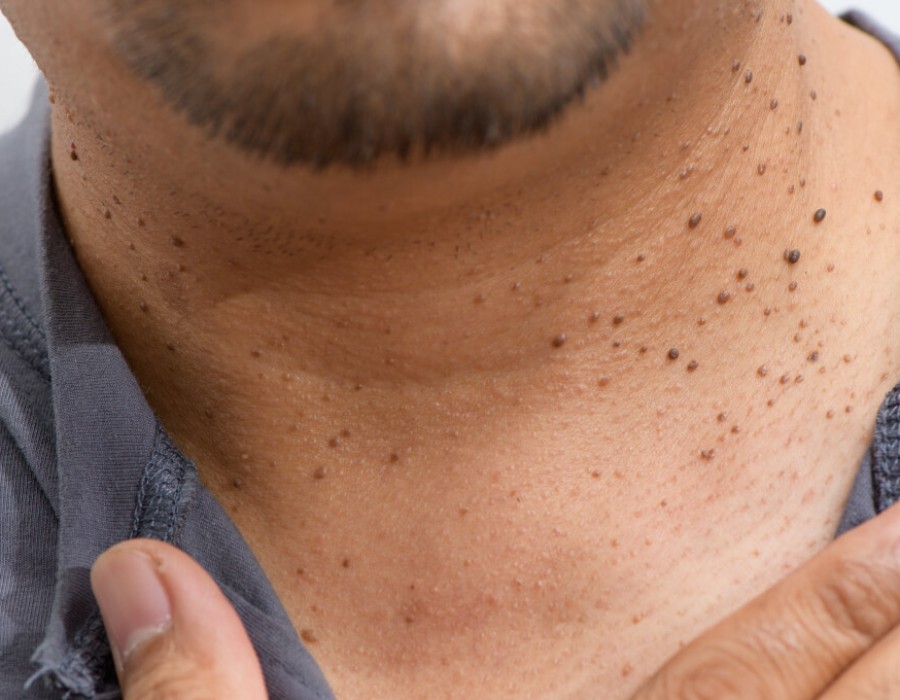Actinic Keratosis Treatment in Dubai is a prevalent skin condition characterized by rough, scaly patches caused by prolonged exposure to ultraviolet (UV) radiation. Although AK is not cancerous, it is a significant indicator of skin damage and can progress to squamous cell carcinoma if left untreated. This article delves into the nature of actinic keratosis, its treatment options, and the latest advancements in managing this condition.
THE NATURE OF ACTINIC KERATOSIS
Actinic keratosis often presents as rough, dry patches on sun-exposed skin, typically appearing on the face, ears, scalp, neck, and backs of the hands. These lesions can vary in color from pink to red or brown and are usually small, measuring between 2 to 6 millimeters in diameter. While many patients experience little to no discomfort, some may notice itching or tenderness in the affected areas.
THE IMPORTANCE OF EARLY DETECTION
Early detection of actinic keratosis is essential for effective treatment and preventing potential skin cancer. Regular skin examinations by a dermatologist are crucial for identifying new lesions and monitoring existing ones. Patients with a history of sunburns, fair skin, or a weakened immune system should be particularly vigilant about their skin health.
TRADITIONAL TREATMENT OPTIONS
Several established treatment options are available for actinic keratosis, tailored to the individual’s specific condition and preferences.
Topical Therapies:
Topical treatments are among the first lines of defense against actinic keratosis. 5-fluorouracil (5-FU) is a commonly prescribed topical chemotherapy agent that works by selectively destroying abnormal skin cells. Patients apply 5-FU directly to the lesions over several weeks. While it is generally effective, some may experience localized irritation, redness, and crusting as the treatment progresses.
Imiquimod is another topical option that stimulates the immune system to target and destroy abnormal cells. This medication is applied several times a week for a specified duration and can lead to mild inflammation and discomfort in the treatment area.
Cryotherapy:
Cryotherapy is a widely practiced and effective treatment that involves freezing the lesions using liquid nitrogen. This procedure can be performed in a dermatologist's office and usually requires minimal recovery time. Patients may experience temporary blistering and redness in the treated areas, which typically resolves within a few weeks.
Curettage and Electrosurgery:
Curettage involves scraping away the keratotic tissue using a curette, followed by electrodesiccation, which employs electrical currents to destroy any remaining abnormal cells. This combination of techniques is particularly effective for thicker lesions and is usually performed under local anesthesia to ensure patient comfort.
INNOVATIVE TREATMENT OPTIONS
In addition to traditional methods, several innovative treatments are gaining popularity for managing actinic keratosis.
Photodynamic Therapy (PDT):
Photodynamic therapy involves the application of a photosensitizing agent to the lesions, followed by exposure to a specific wavelength of light. The light activates the agent, resulting in a chemical reaction that destroys abnormal cells. PDT is especially beneficial for patients with multiple lesions and is associated with a lower risk of scarring compared to traditional treatments.
Laser Therapy:
Laser treatment uses concentrated beams of light to target and remove actinic keratosis lesions. Various laser modalities are available, each with unique benefits. Fractional lasers, for example, promote skin regeneration while minimizing damage to surrounding tissue, making them an attractive option for treating AK.
FACTORS AFFECTING TREATMENT CHOICES
When selecting a treatment for actinic keratosis, several factors must be considered, including the number and size of lesions, their location, and the patient’s overall health and preferences. Individuals with multiple lesions may benefit more from topical treatments or PDT, while those with larger lesions may opt for cryotherapy or surgical excision.
AFTERCARE AND MONITORING
Proper aftercare is essential following treatment for actinic keratosis. Patients should adhere to their healthcare provider’s post-treatment instructions, which may include recommendations for wound care and avoiding sun exposure. Regular follow-up appointments with a dermatologist are crucial for monitoring skin health and assessing the effectiveness of the treatment.
PREVENTIVE STRATEGIES
Preventing actinic keratosis is vital for maintaining skin health. Patients should practice sun safety measures, including using a broad-spectrum sunscreen with an SPF of 30 or higher, wearing protective clothing, and seeking shade during peak sun hours. Routine skin checks are essential for early detection and intervention.
CONCLUSION
Actinic keratosis is a common yet significant skin condition that requires timely diagnosis and appropriate treatment to prevent its progression to skin cancer. Understanding the available treatment options, including innovative therapies, empowers individuals to take control of their skin health. Through diligent sun protection practices and regular dermatological care, individuals can effectively reduce their risk of developing actinic keratosis and maintain healthy skin throughout their lives.





Comments